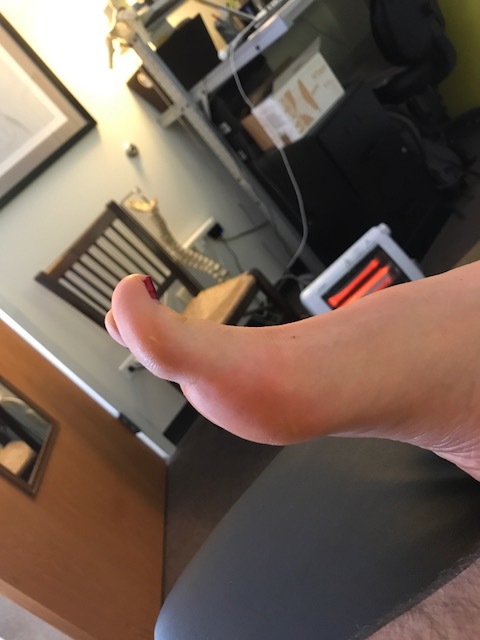Do you really understand what it takes to control the 1st Metatarsal during loading ?
/Do you have dorsal (top) foot pain, at the peak of the arch? Think you are tying your shoes too tightly and that is the cause? Do you have pain over the dorsal or plantar mid foot on heel rise or jumping/landing or going up stairs ?
Just because you raise your heel and load the ball of the foot does not necessarily mean you have adequately plantarflexed the 1st metatarsal and loaded it soundly/stable with the medial tarsal bone. Heel rise, and thus loading onto the medial foot tripod, must be met with ample, stable, durable, 1st metatarsal plantarflexion and the associated medial tarsal bones. Also, without this, loading of the sesamoids properly cannot occur, and pain may ensue.
The first ray complex can be delicate in people who are symptomatic. In some people who do not have a good tibialis posterior-peroneus sling mechanism working harmoniously, in conjunction with a competent arch tripod complex to achieve a compentent arch complex (ie, EDL, EHL, tib anterior and some of the other foot intrinsics) this tarsometatarsal interval can become painful and instead of the 1st ray complex being stable and plantarflexing as the heel departs and the 1st ray begins taking load, it may not do so in a stable plantarflexed posturing. In some people it can momentarily dorsiflex as the arch subtly collapses (when it should be stable and supinated in heel rise).
"Subtle hypermobility of the first tarsometatarsal joint can occur concomitantly with other pathologies and may be difficult to diagnose. Peroneus Longus muscle might influence stability of this joint. Collapse of the medial longitudinal arch is common in flatfoot deformity and the muscle might also play a role in correcting Meary's angle."-Duallert et al
Soon, I hope to show you a video of how to watch for this problem, how to train it properly, how we do it in my office.
Dr. Allen
Reference:
Clin Biomech (Bristol, Avon). 2016 May;34:7-11. doi: 10.1016/j.clinbiomech.2016.03.001. Epub 2016 Mar 10. The influence of the Peroneus Longus muscle on the foot under axial loading: A CT evaluated dynamic cadaveric model study. Dullaert K1, Hagen J2, Klos K3, Gueorguiev B4, Lenz M5, Richards RG6, Simons P7.
https://www.ncbi.nlm.nih.gov/pubmed/27015031



















